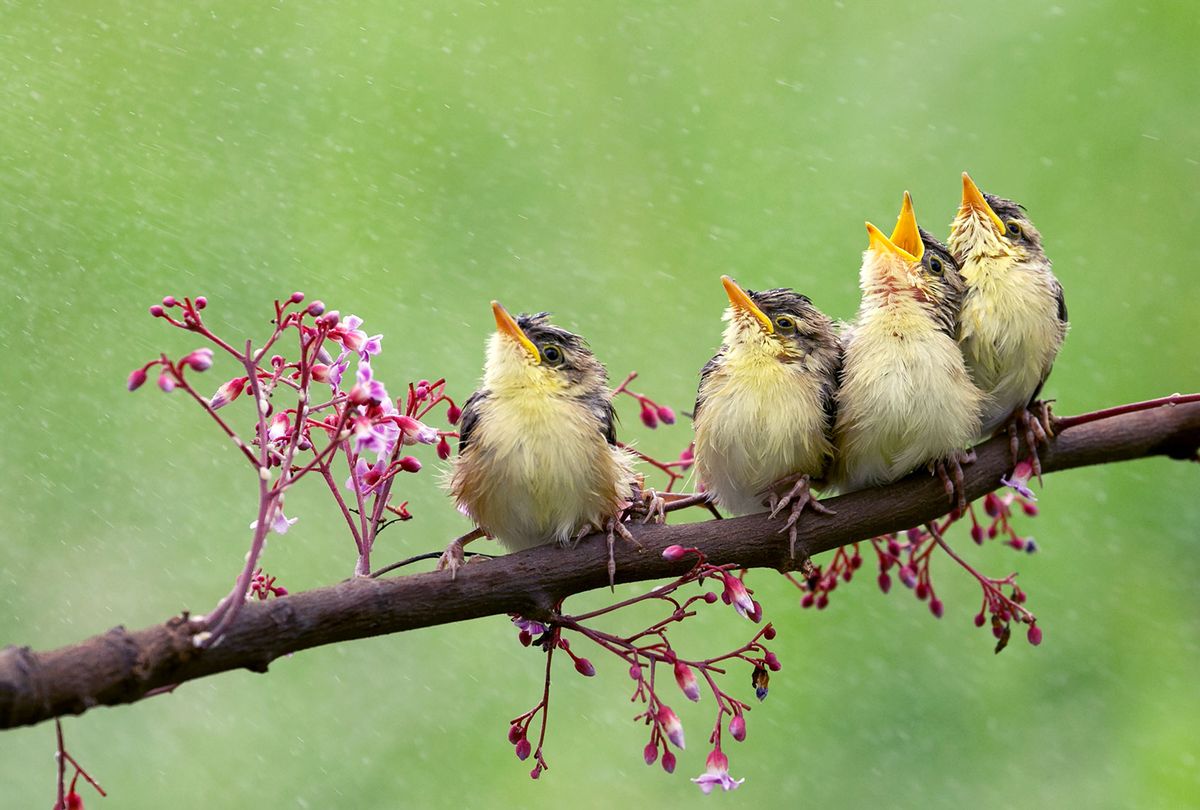Imagine being able to watch musical notes flying through the air as your favorite relaxing song plays gently through the breeze. In a sense, scientists are one step closer to being able to make something along those lines happen with real-life birdsongs: They can now recreate a bird's song merely by reading its brain activity. Now, they can move toward experiments that would read a bird's song-related neural activity in real time.
Why are scientists doing this? As University of California, San Diego (UCSD) psychology professor Timothy Gentner explained in a press release, bird brains are similar enough to human ones that their research could help people with illnesses that impair their ability to communicate.
"We are leveraging 40 years of research in birds to build a speech prosthesis for humans — a device that would not simply convert a person's brain signals into a rudimentary set of whole words but give them the ability to make any sound, and so any word, they can imagine, freeing them to communicate whatever they wish," Gentner said in his statement.
UCSD provided Salon with a link to a sound clip in which you can hear a recording of a zebra finch's song, followed by the biomechanical reproduction of the same song based on a zebra finch's brain signals.
In their paper, the authors point out that birdsongs have long been a rich ore of information about communication.
"Birdsong shares a number of unique similarities with human speech, and its study has yielded general insight into multiple mechanisms and circuits behind learning, execution, and maintenance of vocal motor skill," the authors explain. "In addition, the biomechanics of song production bear similarity to those of humans and some nonhuman primates."
Gentner and Vikash Gilja, another co-author of the paper, explained to Salon that although the last common ancestor between birds and humans lived more than 300 million years ago, our brains have retained important similarities.
"Neurons, the basic building blocks of brains in humans, birds, and almost every other creature with a backbone, are remarkably similar," Gentner and Gilja told Salon by email. "The crux of the problem in both species is the same: how do we translate patterns of neural activity into patterns of sounds? But what makes birdsong such an ideal candidate for this kind of work is its functional similarity to human speech."
And while some birds, like certain parrot species, can vocalize and communicate in complex ways such that they seem to be aware of human language, birds do not have the intellectual capacity for language — at least not in the same way that we do.
"Language allows for creation of infinite meanings from a finite set of speech sounds and words," Gentner and Gilja explained. "Birdsong, along with all other non-human communication signals, appears to lack this capacity. The deeper relationships between music, language, and the 'complexity' of an acoustic signal are the topics of both ongoing research and artistic expression."
Yet bird vocalizations are still exceedingly intricate. One study found that Eurasian jackdaws had specific calls that they would use to warn each other about humans they did not like, meaning they could not only identify specific individuals but assign sounds to refer to them. Toshitaka Suzuki and his colleagues at The Graduate University for Advanced Studies in Japan have learned from observing Japanese tits that they arrange their calls in a specific order much as humans use syntax to construct sentences.
"Syntax was considered to have uniquely evolved in humans, but our study demonstrates that it has evolved in a wild bird, too," Suzuki told BBC Earth. "I think many basic features of language capacity are shared between humans and non-human animals, including birds."
Want more health and science stories in your inbox? Subscribe to Salon's weekly newsletter The Vulgar Scientist.
Humanity has long had a curious relationship with birdsong, which seems to affect human rhythms and psyches in unseen ways. Scientists have found that people find birdsongs reassuring because, thousands of years ago, our ancestors knew that the birds were singing because they felt safe — and that made it more likely that we were also safe. In addition, birdsongs are thought to serve as a natural alarm clock for humans, telling our inner uncivilized animal that the day is starting and we have work to do. The relationship between wild birds and humans is reflexive: during the COVID-19 pandemic, birds became louder and more musical as human-caused noise pollution from automobiles, mundane urban machinery and the herds of people themselves began to quiet down.
"It's certainly an interesting observation that likely points to the behavioral flexibility of songbirds to adapt to changes in their/our acoustic environments, and how much we can learn about the intricacies of the world around us if we simply take a moment to stop and listen," Gentner and Gilja said.



Shares